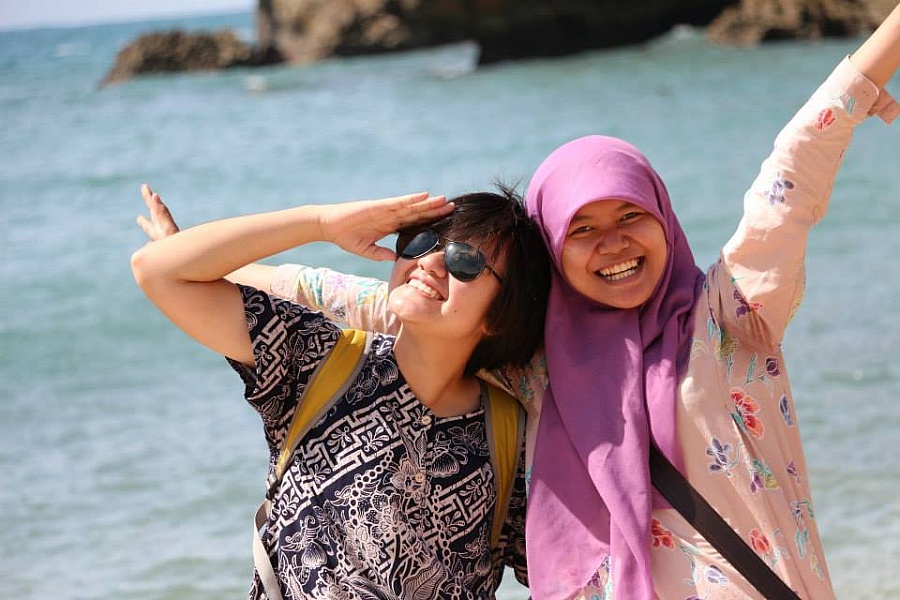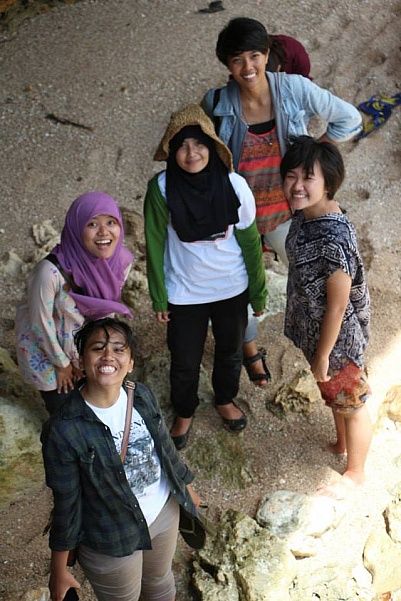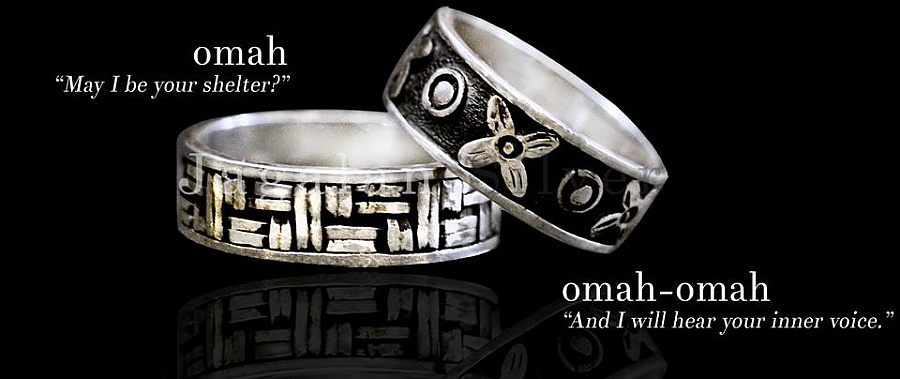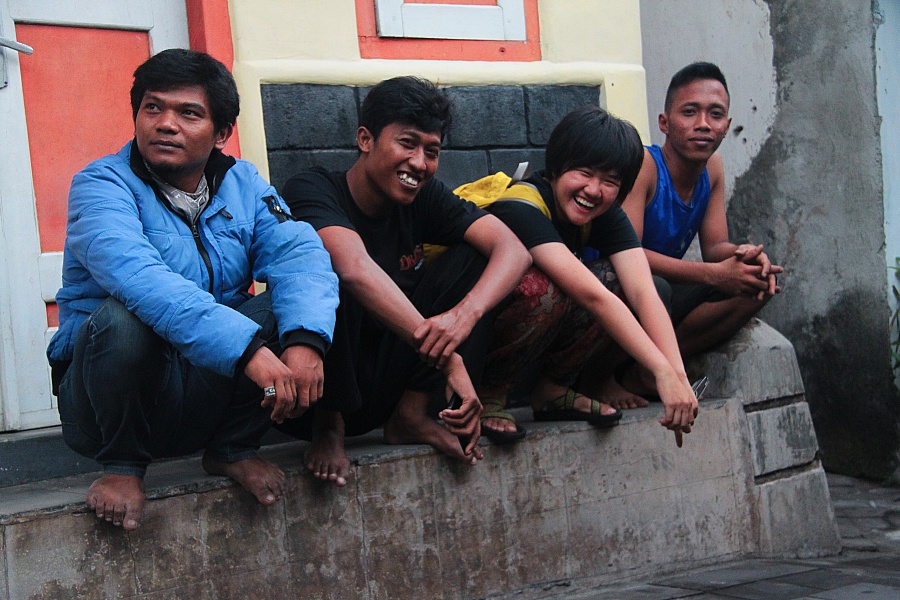On one Valentine’s Day some years ago, I read a news story with the title “Growing into oblivion”. The report talks about the exploitation of flower farmers and how beautiful bouquets are stained by tears of blood that they shed. The long-ignored sufferings of flower growers are contrasted with the gratification of our desires through unchecked consumption.
As Valentine’s Day approaches, many of my friends are stressing out over what gifts they should buy for their lovers. However, there’s one young woman who wants to dedicate this time of the year to reviving an economic lifeline for one Indonesian village. In this issue of Urban Diary, Stephanie Man Shu-wing, 20, brings to us a story from Java where she’s been working with a group of artisans to take their traditional craft into the 21st century.
Stephanie majors in global business at the University of Hong Kong. Her dream is to become a social entrepreneur. Last year, she bravely decided she’d take a year off to travel Asia in search of opportunities to fulfil her ambition. Through the organisation MakeSense, which offers a collaboration platform for aspiring social entrepreneurs, Stephanie has supported the work of social enterprises in different countries, lending them her knowledge and skills in commerce. She called her one-year project “Asia Sense Tour”.
Stephanie’s journey started in September 2013. Her first destination was Malaysia, where she stayed for three months. It was where our journey crossed. At the start of this year, she moved to Kotagede, an old town just outside Yogyakarta in central Java, to begin a new project with a different social enterprise.
Kotagede was once famed as a “silverware empire”, and the village of Jagalan where Stephanie is now applying her social entrepreneurship is a veritable village of silversmiths. Walk into any household in the village, and you’re virtually guaranteed to find a silversmith who makes a living from crafting silverwares. The silversmiths say their ancestors used to serve the royal court. In more recent times they’ve been selling their silverwares to the tourist paradise of Bali. When business was brisk, they could recoup in one week what they’d typically spend in a normal month.
But the good times didn’t last. After the Bali bombings of 2002, tourism slumped, and the silversmiths lost their main source of income. Struggling to make ends meet, they had to reluctantly look for other types of employment. A few years later, an earthquake struck Jagalan, and many houses were destroyed. In the reconstruction that followed, many silversmiths became builders, attracted as they were by the higher pay.
There are of course silversmiths who chose to cling on to their profession, but they also have to contend with the competition of big companies. In fact they can’t make a living out of crafting silverwares because any profits they can make are so meagre that they must have a second job to support their income. Understandably, the young can’t be bothered to learn silver making because they don’t see any future in dedicating their lives to this traditional craft.
The sorry fate of this once-famous silversmiths’ village in central Java is a familiar tale: many traditional crafts have faded out or failed to find a new generation of practitioners because of social-economic changes similar to what Jagalan has gone through in the past decade. Once a village of 2,000 inhabitants, there are only 11 silversmiths left in Jagalan today.
Just as silver making appeared to be heading for an inevitable demise in Jagalan, a group of young people started to actively look for new ways to revive business for the silversmiths so that they could stop the traditional craft from disappearing altogether. Thanks to the efforts of a local group called Arkomjogja, the youngsters got organised, and it was perfect timing that Stephanie entered the frame at this moment and very quickly they decided to collaborate.
As Valentine’s Day drew close, Stephanie had a stroke of inspiration. “The silversmiths can make Valentine’s-themed silver accessories and sell them in Hong Kong,” Stephanie said.
Stephanie wanted the products to carry stories, so she started to collect Jagalan love stories together with her new-found friends. She said that divorce is traditionally rare in Java, and that Jagalan has only ever known five divorced couples – perhaps a sobering piece of statistic for the modern world where free love is taken for granted and people can get married as easily as they can get divorced afterwards.
The Jagalan love stories reflect local culture. In Jagalan, Stephanie came across enduring marriages and the different values on love that they embody. She tells the story of an elderly silversmith who made a pair of wedding rings for himself and his wife. The old lady’s ring is engraved with her husband’s name, and his with hers. Despite the money problems that have tested the strength of their marriage over the years, the couple is as loving to each other as ever.
Working with her friends, Stephanie has made a video about the old lady’s story. In addition to using the short film to promote the silver accessories, Stephanie hopes that this humble yet moving story will help the audience know more about the people and culture of Jagalan.
In Javanese, omah-omah expresses the idea that true love is based on understanding and acceptance. Stephanie has chosen this idea to steer the publicity pitch for the silver accessories not only because it’s Valentine’s Day, but perhaps it also testifies to the devotion that this young woman feels for traditional crafts, as well as the universal solidarity and love she extends to strangers who are under-privileged and in need of support.
Omah-omah
The rings on sale this time are available in a limited edition of 25 pairs priced at HK$800 each. The designs are all based on real-life love stories. Omah means ‘protection’ or ‘a sanctuary’ in Javanese. The interwoven bamboo pieces in the design represent two independent lives becoming even stronger after they come together in union; the traditional stylised prints convey blessings of harmonious and long-lasting love.
Apart from trying to open a new market, Stephanie’s project is also an experiment in creating a new business model, such as a cooperative. Part of the proceeds from the sales of the limited edition rings will go into a community fund and the silversmiths’ village of Jagalan will have to decide how they are going to sustainably develop. This is a challenge not only for the skilled craftsmen, but it is a big question that all social entrepreneurs will have to mull over.






